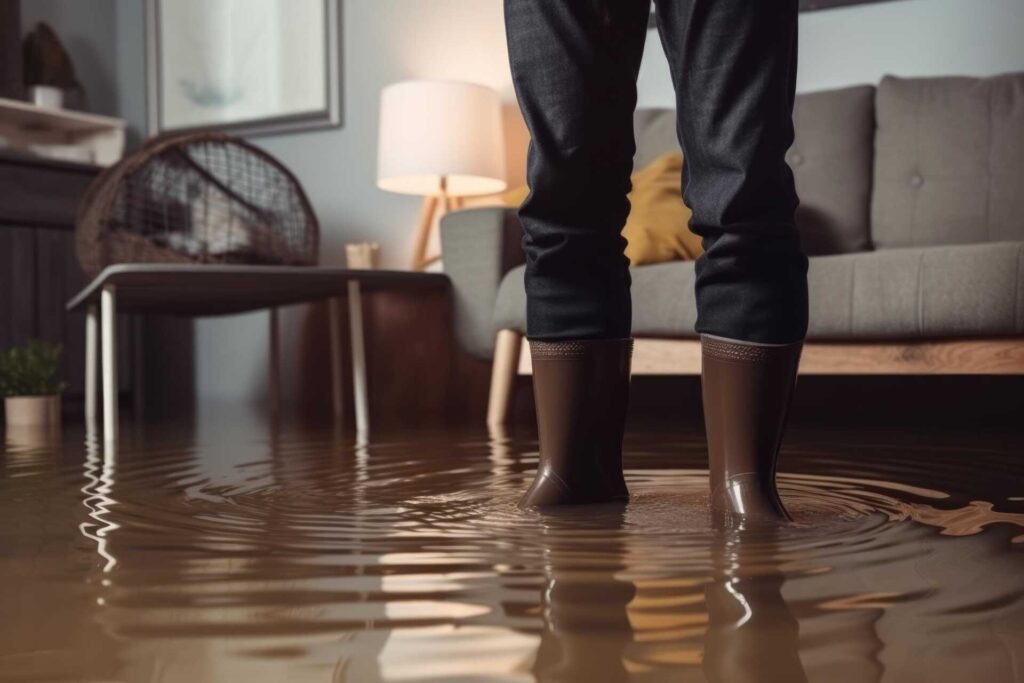
Contents
When faced with water damage, you know that quick action is essential. Using proven techniques ensures that you tackle the issue effectively, minimizing long-term damage and repair costs. Professional equipment plays an important role in this process, allowing for thorough assessments and efficient water extraction. But what specific methods can help prevent dangerous mold growth? Understanding these strategies can make all the difference in your restoration efforts.
Key Takeaways
- Proven techniques ensure prompt action, minimizing damage and reducing repair costs effectively.
- Utilizing professional equipment enhances water extraction and promotes thorough drying, preventing future issues.
- Comprehensive damage assessments identify hidden problems, allowing for targeted restoration efforts and better outcomes.
- Effective drying techniques inhibit mold growth, safeguarding property and health within a critical 24 to 48-hour window.
- Consistent monitoring of humidity levels aids in maintaining a balanced environment, further preventing water damage complications.
Understanding the Importance of Quick Response
When it comes to water damage restoration, every minute counts. Your prompt action can greatly mitigate the extent of damage and reduce repair costs. This is where emergency response comes into play. If you notice water intrusion, don’t hesitate—act quickly. A timely intervention can prevent mold growth, structural damage, and the loss of personal belongings.
First, assess the situation. Identify the source of water and shut it off if possible. Then, contact a professional restoration service. They’ve the expertise to handle various types of water damage, whether it’s from a burst pipe, flooding, or leaks.
The sooner you initiate this process, the better your chances of preserving your property.
The Role of Professional Equipment in Restoration
After you’ve taken immediate action to address water intrusion, the next step involves utilizing the right professional equipment to effectively restore your property.
Using specialized restoration tools and advanced technology is essential for a successful outcome.
Here’s how professional equipment enhances the restoration process:
Moisture Detection: Advanced moisture meters identify hidden water, preventing mold growth and further damage.
High-Powered Extractors: These machines rapidly remove excess water, minimizing drying time and reducing overall repair costs.
Air Movers and Dehumidifiers: They work together to circulate air and lower humidity levels, ensuring all surfaces dry thoroughly.
Proven Techniques for Effective Water Extraction
Effective water extraction is vital for minimizing damage and preventing long-term issues like mold growth. To achieve this, you need to employ proven restoration techniques that ensure thorough removal of water.
Start by using high-powered pumps to extract large volumes of standing water swiftly. Once the bulk water is removed, utilize industrial-grade dehumidifiers and air movers to eliminate residual moisture from the air and surfaces.
It’s important to monitor humidity levels continuously during this process, as effective water extraction relies on achieving ideal drying conditions.
Don’t forget to check hidden spaces, like crawl spaces and behind walls, where water can accumulate unnoticed.
Preventing Mold Growth Through Proper Drying Methods
To prevent mold growth, it’s essential to implement proper drying methods immediately following water damage. Mold can begin to develop within 24 to 48 hours if moisture isn’t addressed.
Utilizing effective drying techniques is vital for mold prevention. Here are three key steps to follow:
Assess and Remove Standing Water: Quickly identify and eliminate any standing water using pumps or wet vacuums to reduce moisture levels.
Increase Air Circulation: Utilize fans and dehumidifiers to promote airflow and evaporate remaining moisture, making it harder for mold spores to settle.
Monitor Humidity Levels: Keep humidity below 60% by regularly checking with a hygrometer, ensuring the environment remains inhospitable for mold.
The Benefits of Comprehensive Damage Assessment
While you may be keen to start the restoration process after water damage, conducting a thorough damage assessment is essential for ensuring a complete and effective recovery. A detailed evaluation helps identify the extent of the damage, allowing you to prioritize repairs and allocate resources efficiently.
By documenting the damage meticulously, you create a detailed record that can be invaluable for insurance claims and future reference.
This assessment reveals visible issues and uncovers hidden problems, such as structural weaknesses or lingering moisture that could lead to mold growth.
With a clear understanding of the situation, you can implement targeted restoration techniques, ensuring that no critical aspect is overlooked.
Ultimately, a detailed damage assessment lays the groundwork for a successful restoration, helping you recover your property more effectively and with greater peace of mind.
Recap
In the face of water damage, think of proven restoration techniques as your guiding lighthouse in a stormy sea. By acting swiftly, using advanced equipment, and employing effective methods, you can navigate the treacherous waters of recovery. These approaches safeguard your property from further harm and illuminate the path to a mold-free environment. Embracing these strategies ensures your home can weather any storm, emerging stronger and more resilient than before.
Recent Posts
5 Tips for Water Damage Restoration Success
When faced with water damage, it’s essential to act quickly and methodically. You’ll need to
Why Waiting Hurts: Urgent Water Removal Strategies
Did you know that mold can start growing within just 24 to 48 hours after
Master Flood Recovery: Test Your Water Removal Skills
Many people underestimate the complexity of flood recovery, often thinking it’s just about removing water.
